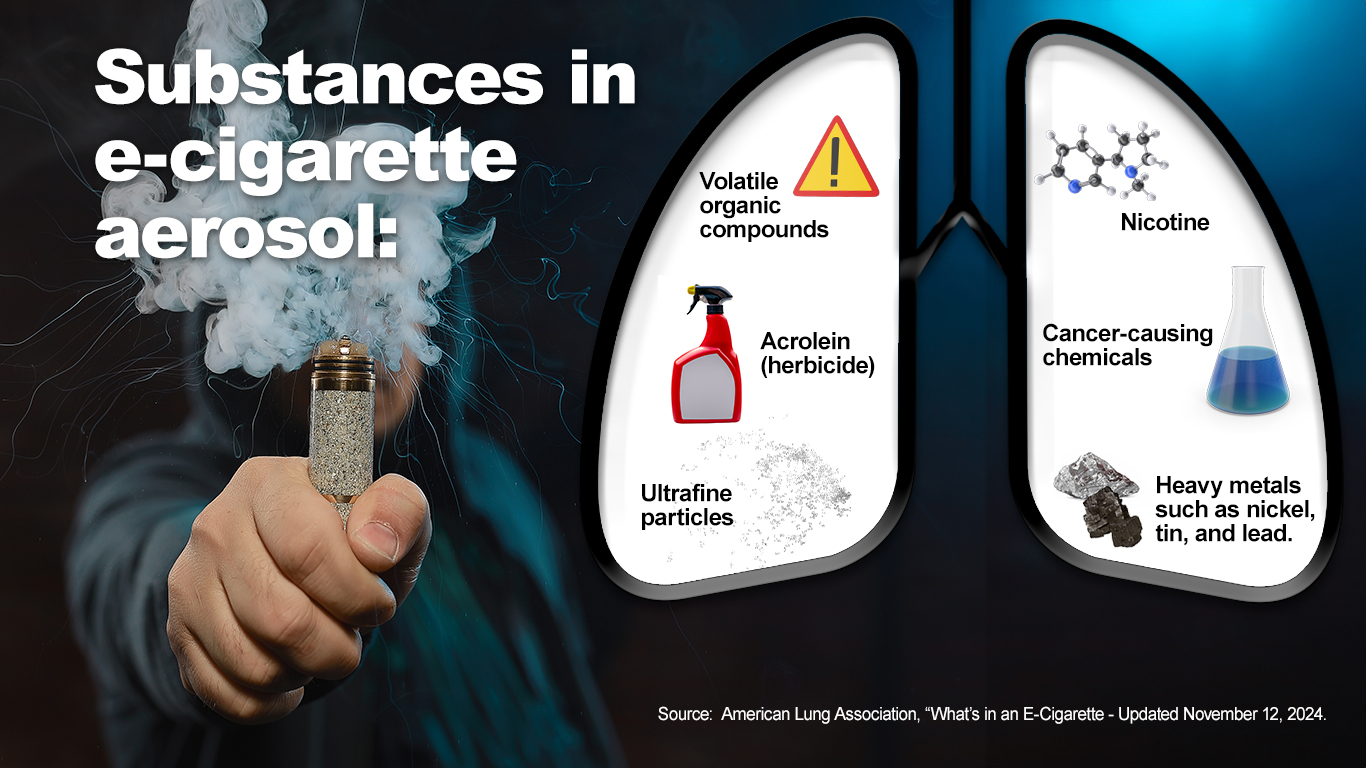E-Cigarettes and Secondhand Aerosols

What comes out of an e-cigarette (aerosol) may look different than secondhand smoke from cigarettes, but it is far from harmless. The Surgeon General warns e-cigarette emissions can contain harmful chemicals, including nicotine and volatile organic compounds.
The aerosol from an e-cigarette, besides nicotine, can contain other substances that are addictive and can cause lung disease, heart disease, and cancer.
E-cigarette vapor typically contains propylene glycol and/or vegetable glycerin. These are substances used to produce stage or theatrical fog, which have been found to increase lung and airway irritation after concentrated exposure.
In addition, e-cigarettes and e-cigarette vapor may contain the chemicals or substances listed below.
- Volatile organic compounds (VOCs): At certain levels, VOCs can cause eye, nose, throat irritation, headaches, nausea, plus, can damage the liver, kidney, and nervous system.
- Flavoring chemicals: Some flavorings are more toxic than others. Studies have shown that some flavors contain different chemical levels called diacetyl has been linked to a severe lung disease called bronchiolitis obliterans.
- Formaldehyde: This is a cancer-causing substance that may form if e-liquid overheats or not enough liquid is reaches the heating element (known as a “dry-puff”).
The FDA does not currently require testing of all the substances in e-cigarettes to ensure they are safe. It is also hard to know what chemicals are in an e-cigarette because most products do not list all the harmful or potentially harmful substances contained in them.
It is also important to know the U.S. Centers for Disease Control and Prevention (CDC) has stated that sometimes e-cigarette products are changed or modified and can have possibly harmful or illegal substances from unknown sources.
Sources: American Cancer Society. U.S. Center for Disease and Control and Prevention.
